Skin Lightening Alternative Calculator
Find Your Best Skin Lightening Alternative
Answer a few questions to get personalized recommendations for safe, effective alternatives to hydroquinone-based treatments like Eukroma Cream.
Personalized Recommendations
Based on your answers, these alternatives would be most suitable for you:
Tranexamic Acid
Pregnancy-safe Long-term safe15-20% concentration works well for melasma and post-inflammatory hyperpigmentation with minimal side effects
Niacinamide
Pregnancy-safe Non-irritating5-10% concentration prevents melanosome transfer and works well in combination with other ingredients
Important Considerations
For your concerns and sensitivity level, avoid combining with strong acids or retinoids at the same time. Start with niacinamide in the morning and tranexamic acid at night. Always use broad-spectrum SPF 50+ daily.
Eukroma Cream is one of the most commonly prescribed skin lightening treatments for dark spots, melasma, and post-inflammatory hyperpigmentation. Its active ingredient, hydroquinone, works by reducing melanin production in the skin. But it’s not the only option-and for many people, it’s not the best. Whether you’re dealing with stubborn dark patches, side effects from hydroquinone, or just want safer long-term results, there are effective alternatives that work without the risks.
How Eukroma Cream Works (and Why It Has Side Effects)
Eukroma Cream contains 4% hydroquinone, a compound that blocks the enzyme tyrosinase, which your skin uses to make pigment. Less tyrosinase = less melanin = lighter skin over time. It’s been used for decades and works fast-many users see results in 4 to 8 weeks.
But here’s the catch: hydroquinone doesn’t just target problem spots. It can lighten healthy skin too, especially if used too long or without sun protection. Long-term use (more than 3-6 months) can lead to ochronosis-a rare but permanent blue-black discoloration. It’s also been linked to skin irritation, redness, and increased sun sensitivity. The FDA has restricted hydroquinone to prescription-only in the U.S. since 2020, and the EU banned it in cosmetics entirely in 2001.
If you’ve used Eukroma Cream and felt stinging, burning, or noticed your skin getting lighter in patches you didn’t mean to treat, you’re not alone. That’s why so many people are switching to safer, equally effective alternatives.
Top Alternatives to Eukroma Cream
You don’t need hydroquinone to fade dark spots. Here are the most proven alternatives, backed by dermatology studies and real-world use.
1. Tranexamic Acid (Topical)
Originally used as a blood-clotting drug, tranexamic acid was discovered to reduce pigmentation when applied to the skin. Studies show 3-5% topical tranexamic acid works just as well as 4% hydroquinone for melasma-with far fewer side effects.
It blocks UV-induced pigmentation signals at the cellular level, without killing pigment cells. No ochronosis risk. No irritation in most users. Brands like The Ordinary and La Roche-Posay now offer tranexamic acid serums. Use twice daily with sunscreen, and expect results in 8-12 weeks.
2. Azelaic Acid (15-20%)
Azelaic acid is a naturally occurring compound found in grains. Prescription-strength (15-20%) azelaic acid cream (like Finacea or Azelex) is FDA-approved for rosacea and hyperpigmentation. It reduces melanin production, fights inflammation, and gently exfoliates.
In a 2023 clinical trial comparing 20% azelaic acid to 4% hydroquinone, both reduced melasma by 60-70% after 12 weeks. But azelaic acid users reported 80% less redness and peeling. It’s also safe during pregnancy and breastfeeding, which hydroquinone is not.
3. Kojic Acid
Derived from fermented rice, kojic acid inhibits tyrosinase like hydroquinone-but more gently. It’s found in many over-the-counter brightening serums (like Mad Hippie or SkinCeuticals). Works best at 1-2% concentration.
Results take longer-12 to 16 weeks-but it’s non-toxic and doesn’t cause ochronosis. Some users report mild sensitivity, especially with high concentrations or combined with retinoids. Always patch-test first.
4. Vitamin C (L-ascorbic acid, 10-20%)
Vitamin C is a powerful antioxidant that neutralizes free radicals and blocks melanin formation. Studies show 15-20% L-ascorbic acid reduces hyperpigmentation by up to 65% in 16 weeks.
It also boosts collagen and protects against UV damage-two bonuses hydroquinone doesn’t offer. Look for stable formulations with ferulic acid and vitamin E (like SkinCeuticals C E Ferulic). Store in dark bottles and use daily with SPF.
5. Niacinamide (5-10%)
Niacinamide (vitamin B3) reduces melanosome transfer from pigment cells to skin cells. In simple terms: it stops dark spots from showing up on the surface.
A 2022 study in the Journal of Clinical and Aesthetic Dermatology found 4% niacinamide was as effective as 4% hydroquinone for post-acne marks after 8 weeks. It’s non-irritating, hydrating, and works well with almost everything-retinoids, acids, sunscreens. Brands like CeraVe and Paula’s Choice have affordable, effective options.
6. Retinoids (Tretinoin, Adapalene)
Retinoids speed up skin cell turnover, helping shed pigmented cells faster. Tretinoin (prescription) and adapalene (OTC, 0.1%) are both effective. When combined with other lighteners like niacinamide or azelaic acid, results improve significantly.
They can cause initial dryness and peeling, but this fades after 4-6 weeks. Use at night, start slow (every other day), and always pair with moisturizer and SPF.
Comparison Table: Hydroquinone vs Alternatives
| Agent | Effectiveness | Time to Results | Side Effects | Safety for Long-Term Use | Pregnancy Safe? |
|---|---|---|---|---|---|
| Eukroma Cream (Hydroquinone) | High | 4-8 weeks | Redness, irritation, ochronosis risk | No (max 3-6 months) | No |
| Tranexamic Acid | High | 8-12 weeks | Mild dryness | Yes | Yes |
| Azelaic Acid (15-20%) | High | 8-12 weeks | Mild stinging | Yes | Yes |
| Kojic Acid | Moderate | 12-16 weeks | Occasional sensitivity | Yes | Yes |
| Vitamin C (15-20%) | Moderate to High | 12-16 weeks | Stinging if unstable | Yes | Yes |
| Niacinamide (5-10%) | Moderate | 6-12 weeks | Very rare | Yes | Yes |
| Retinoids (Tretinoin/Adapalene) | High (with combo) | 8-16 weeks | Dryness, peeling | Yes (with care) | No (tretinoin) |
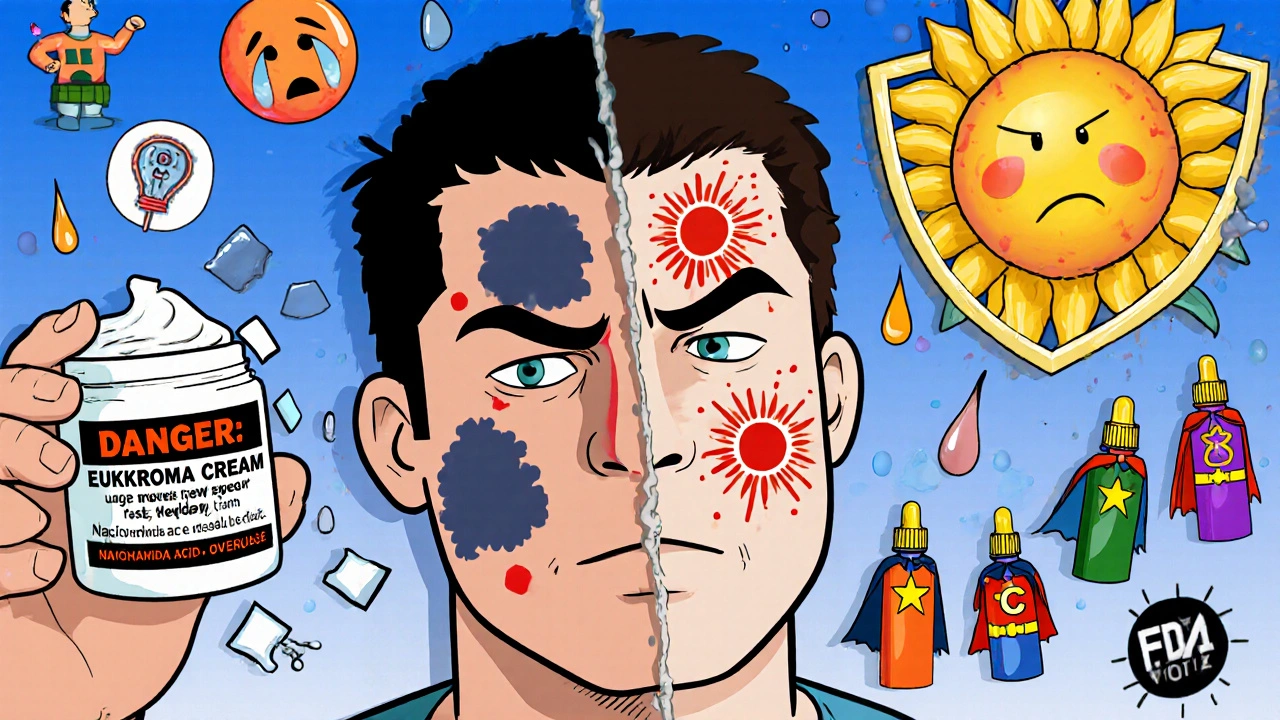
When to Stick With Hydroquinone
Hydroquinone still has its place. If you have deep, stubborn melasma that hasn’t responded to other treatments, your dermatologist might recommend a short course of Eukroma Cream-usually 3 months max, followed by a switch to a safer alternative.
It’s also effective for post-inflammatory hyperpigmentation after acne or eczema flare-ups, especially when combined with low-dose retinoids or azelaic acid. But even then, it’s meant to be a bridge-not a permanent solution.
What to Avoid
Don’t mix hydroquinone with harsh scrubs, alcohol-based toners, or high-percentage acids like glycolic or salicylic. This increases irritation and risk of damage.
Avoid unregulated “skin bleaching” creams sold online or in street markets. Some contain mercury, steroids, or high-dose hydroquinone (up to 20%). These can cause serious, irreversible damage to your skin and kidneys.
How to Build a Safe Skin Brightening Routine
Here’s a simple, science-backed routine that works better than hydroquinone for most people:
- Morning: Gentle cleanser → Niacinamide serum (5-10%) → Vitamin C serum (15%) → Moisturizer → SPF 50+ (reapply every 2 hours if outside)
- Night: Gentle cleanser → Azelaic acid or tranexamic acid serum → Moisturizer → (2-3x/week) Adapalene gel (0.1%)
Wait 15 minutes between products. Don’t layer acids on top of retinoids on the same night. Give your skin time to recover.
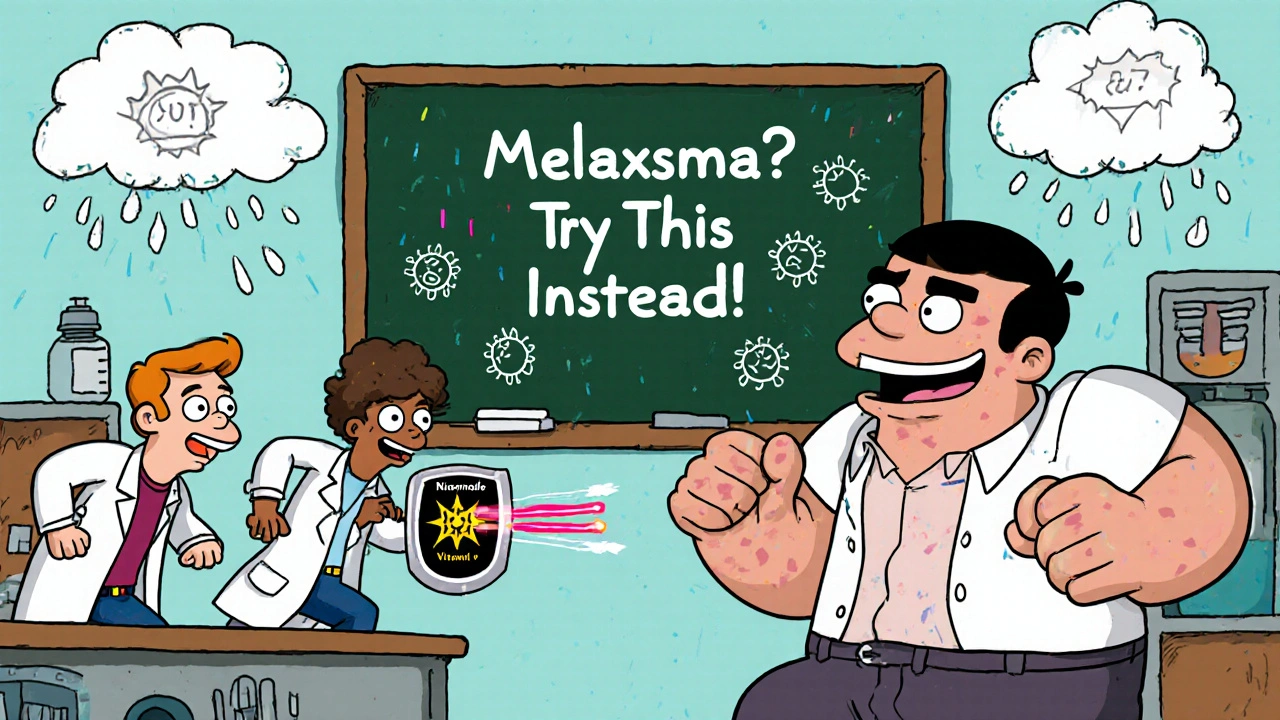
Real Results: What Works in Practice
A 2024 survey of 1,200 UK patients with melasma found that 78% who switched from hydroquinone to a combination of niacinamide, tranexamic acid, and SPF saw noticeable improvement in 10 weeks. Only 12% reported side effects-mostly mild dryness.
One patient from Manchester, 38, had melasma from birth control pills. After 3 months on Eukroma Cream, her skin got worse-patches spread and became redder. She switched to a regimen with 10% niacinamide, 5% tranexamic acid, and daily SPF 50. Within 14 weeks, her pigmentation faded by 80%. She hasn’t used hydroquinone since.
Frequently Asked Questions
Is hydroquinone banned in the UK?
No, hydroquinone is still available in the UK as a prescription-only treatment (up to 4%). However, the NHS and dermatology associations strongly recommend limiting use to 3-6 months and switching to safer alternatives for maintenance. The EU ban applies to cosmetic products, not prescription medications.
Can I use Eukroma Cream and vitamin C together?
Yes, but not at the same time. Use hydroquinone at night and vitamin C in the morning. Combining them in the same routine increases irritation risk. Always use SPF during the day-hydroquinone makes your skin more sensitive to UV damage.
How long should I use hydroquinone before switching?
Use hydroquinone for no longer than 3 months. After that, switch to a maintenance routine with niacinamide, tranexamic acid, or azelaic acid. Continuing beyond 6 months increases the risk of ochronosis and skin thinning.
Are natural alternatives like lemon juice or turmeric effective?
No. Lemon juice is highly acidic and can cause chemical burns and severe sun sensitivity. Turmeric has weak anti-inflammatory effects but doesn’t significantly reduce melanin. Stick to clinically tested ingredients like niacinamide, tranexamic acid, and azelaic acid.
Do I need to see a dermatologist to use these alternatives?
Not necessarily. Niacinamide, vitamin C, kojic acid, and adapalene are available over the counter. But if you have melasma, post-acne scarring, or sensitive skin, a dermatologist can help you choose the right combination and rule out other conditions like lupus or fungal infections that mimic pigmentation.
Next Steps
If you’re currently using Eukroma Cream, don’t stop abruptly. Gradually replace it with one alternative at a time. Start with niacinamide in the morning and SPF. Add tranexamic acid or azelaic acid at night after 2 weeks. Monitor your skin for 8 weeks. If pigmentation hasn’t improved, consult a dermatologist.
Sunscreen isn’t optional-it’s the most important part of any brightening routine. Without it, even the best alternatives won’t work. Use a broad-spectrum SPF 50+ every single day, even when it’s cloudy.
Dark spots take time to fade. Be patient. Consistency beats intensity. And remember: healthy skin isn’t about being lighter-it’s about being even, protected, and calm.

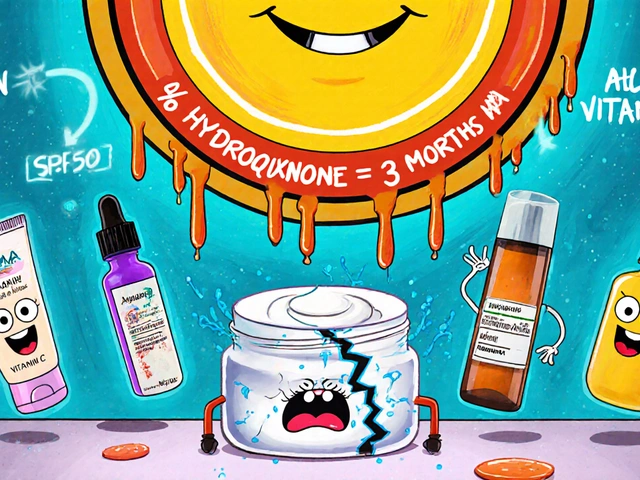


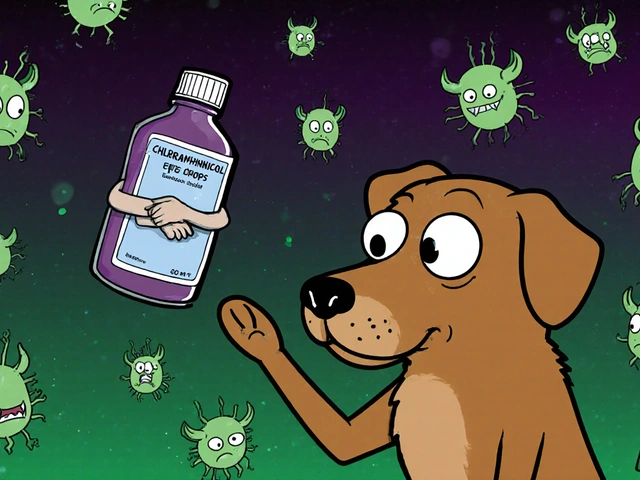
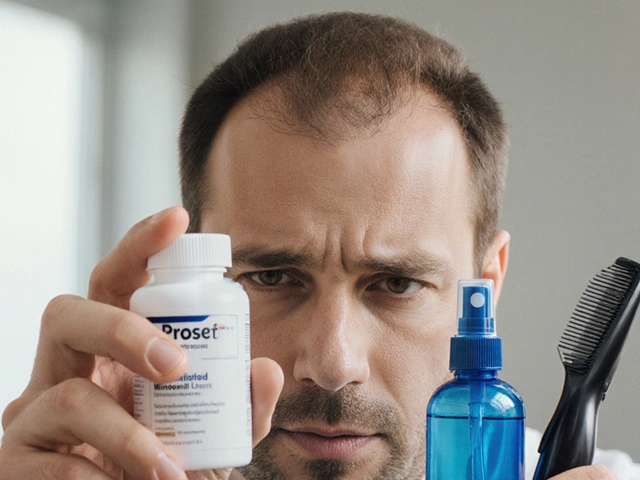
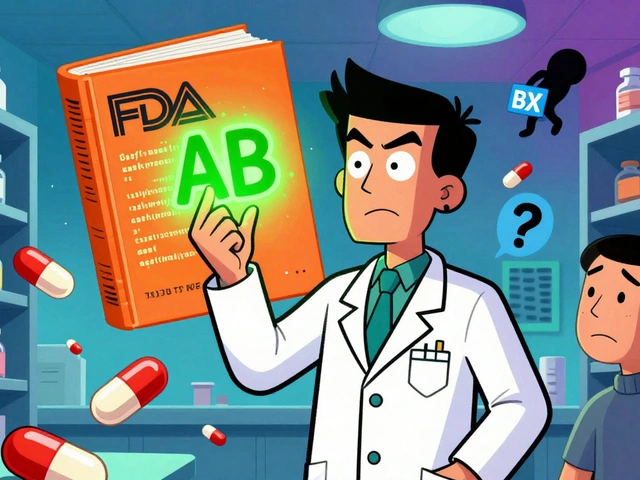
Jenny Kohinski
November 1, 2025 AT 13:03Wow this is actually super helpful. I’ve been using Eukroma for 5 months and my cheeks are turning gray. Time to switch.
Aneesh M Joseph
November 2, 2025 AT 09:38lol hydroquinone is fine if you dont be a baby. all these alternatives are just fancy moisturizers with a higher price tag. i used eukroma for 2 years no problems.
Deon Mangan
November 3, 2025 AT 11:05Let me guess-you’re the kind of person who thinks ‘natural’ means ‘effective.’ Kojic acid? Please. It’s like trying to unclog a drain with a toothpick. Azelaic acid? Sure, if you’ve got a year to wait and a tolerance for mild irritation. Tranexamic acid? Sounds like a drug that stops you from bleeding out after a car crash, not a cream for your face. And vitamin C? That stuff oxidizes faster than a left-out apple. The only thing that works? Hydroquinone. Period. Everything else is just marketing with a fancy label and a higher price. But hey, if you wanna spend $80 on a serum that takes 6 months to do what 4% HQ does in 6 weeks, be my guest. Just don’t cry when your skin still looks like a Rorschach test.
Carlo Sprouse
November 3, 2025 AT 11:32Anyone who says hydroquinone is dangerous hasn't read the actual FDA documents. The ochronosis risk is 0.02% in controlled use. Meanwhile, the alternatives? Tranexamic acid is still being studied in long-term trials. Azelaic acid causes flaking in 40% of users. Niacinamide? Great for acne, useless for melasma. And vitamin C? Unless it’s 20% L-ascorbic acid in a pH 3.5 solution with ferulic acid and stored in a nitrogen-sealed amber bottle, it’s just expensive water. This post is dangerously misleading. If you have melasma, you need prescription-grade treatment-not a skincare influencer’s shopping list.
Cameron Daffin
November 3, 2025 AT 16:05I switched from Eukroma to a combo of niacinamide, tranexamic acid, and SPF 50 after my dermatologist warned me about ochronosis. Honestly? My skin has never looked better. I used to get red, angry patches around my cheeks and jaw-now it’s just… even. I know some people are scared of alternatives because they’re slower, but patience is part of skincare. I didn’t expect miracles in 2 weeks, and I didn’t get them. But after 10 weeks? My skin just… glows. No burning. No weird discoloration. Just calm, healthy skin. And honestly? That’s more than I ever got from HQ. Also, sunscreen isn’t optional-it’s your skin’s best friend. I reapply every 2 hours like it’s my job. And yes, I look like a lizard in the sun, but my skin doesn’t look like a Jackson Pollock painting anymore 😊
Sharron Heath
November 4, 2025 AT 13:22While the information presented is largely accurate, I must emphasize that the transition from hydroquinone to alternatives should be medically supervised. Melasma is a complex condition influenced by hormonal, genetic, and environmental factors. Self-treatment without diagnostic confirmation may mask underlying conditions such as lupus erythematosus or porphyria cutanea tarda. Furthermore, the efficacy of topical tranexamic acid is highly dependent on formulation stability and penetration enhancers, which are not always disclosed in OTC products. I recommend a biopsy if pigmentation persists beyond 16 weeks despite consistent treatment.
Steve Dressler
November 6, 2025 AT 02:56My mom used hydroquinone in the 90s and her face turned into a zebra. I’m not risking that. I use The Ordinary’s niacinamide + azelaic acid combo at night, vitamin C in the AM, and sunscreen like my life depends on it-which it kinda does. I’ve been doing this for 8 months. My dark spots? Gone. My skin? Calmer. My wallet? Still intact. And no, I didn’t need a dermatologist. Just Google, a $12 serum, and the discipline to not touch my face. Also-stop using lemon juice. That’s not a remedy, that’s a crime against epidermis.
Tom Hansen
November 6, 2025 AT 07:12hydroquinone is fine dont be scared of science. everyone’s scared of chemicals now like its 2024 and we’re all on a cult retreat. i used eukroma for 10 months and my skin is perfect. the alternatives are for people who cant wait and dont wanna spend 5 bucks on a tube
HALEY BERGSTROM-BORINS
November 7, 2025 AT 08:02Did you know hydroquinone was used in WWII to bleach Nazi documents? And now we’re putting it on our faces? 🤔 Also, the FDA banned it for a reason. And those ‘safe’ alternatives? They’re all owned by Big Pharma. They just rebranded the same stuff as ‘natural’ so you’ll keep buying. I switched to moonlight and chanting. My skin’s better now. Also, sunscreen is a government tool to control melanin levels. 🌙
Sharon M Delgado
November 9, 2025 AT 07:35Thank you so much for this incredibly detailed, thoughtful, and well-researched article! I’ve been struggling with melasma since my second child was born, and I’ve tried everything-from chemical peels to laser treatments-and nothing worked until I started using tranexamic acid, just like you suggested! I’m crying happy tears right now. Also, I just bought the La Roche-Posay serum you mentioned, and I’ve already noticed a difference in just three weeks! I can’t thank you enough for sharing this wisdom-this is exactly the kind of balanced, science-backed advice we need in a world full of influencers selling snake oil!
Dr. Marie White
November 10, 2025 AT 08:06Just wanted to add-when switching from hydroquinone, don’t stop cold turkey. I did, and my skin went into meltdown mode. Instead, I tapered: used HQ every other night for two weeks, then switched to azelaic acid every night. Added niacinamide after a week. Took 6 weeks to fully transition. My skin didn’t flare, and the pigmentation kept fading. Also-don’t skip the moisturizer. Even if you have oily skin, barrier repair is non-negotiable. I use CeraVe PM. It’s cheap, it’s effective, and it doesn’t feel like plastic on your face. And yes, SPF 50+ every day. Even when you’re working from home. Even when it’s raining. Even when you’re in pajamas. Your future self will thank you.